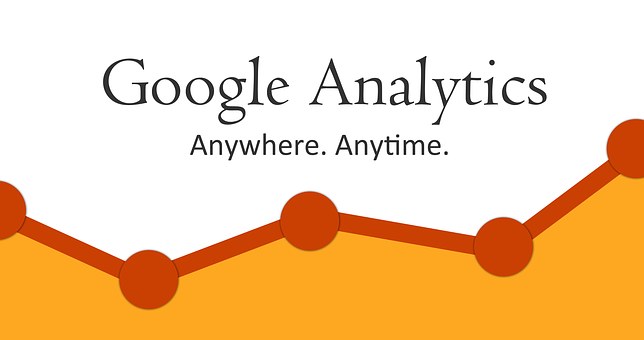If you think using data from your CRM is enough for sales analytics, think again. Learn how to harness the power of data for serious sales.
2019: The year of personalized content.?
71 percent of marketers leverage real-time marketing and the increasing tendency for consumers to get frustrated when an online experience doesn’t meet their expectations or fit their interests.
74 percent of consumers get frustrated with websites when content such as offers, ads, and promotions fails to align with their interests.
Are you a mind reader?
Of course, the progression from marketing to sales is (hopefully) pretty natural, and personalized, relevant communications is just as important in the sales cycle as it is throughout the buyer’s journey.
The technology for fine-tuning marketing and sales communications to match consumers’ precise interests is largely what drives the increasing expectation for personalized, targeted messaging.
Sales analytics is useful for “identifying, modeling, understanding and predicting sales trends and outcomes while aiding sales management in understanding where salespeople can improve.”
Through channels like Facebook and Google, consumers create a wealth of data and a rich history of their behaviors, interests, and other metrics that enable marketing and sales professionals to communicate the right messages, at the right moments, through the right mediums. Blanket analytics and segmentation are no longer enough to meet the demands of the modern, mobile consumer in the world of instant gratification.
Even executive, B2B buyers share the same frustrations as B2C buyers. Our Research finds that 78 percent of executive buyers say sales reps don’t have relevant case studies to illustrate how companies like theirs can benefit from products or solutions while 77 percent feel that sales reps lack an understanding of their business’ problems and where they can help.
Today, the sales professionals who seemingly have mind-reading capabilities are those who win business. The key to becoming a mind reader? Sales analytics.
The real-time element is key in sales analytics
Sales reps need access to data from a variety of sources, both within and outside your organization. What’s more, they need the ability to navigate, combine, and undertake data collection in meaningful ways – preferably without the assistance of your IT department.
That’s where sophisticated sales analytics platforms come in, offering easy navigation and analysis of a multitude of sources, pinpointing key opportunities at critical touch points throughout the buyer’s journey, and arming sales representatives with the most effective messaging to get results.
Without real-time analytics, opportunities have already passed by the time the sales data is gathered and analyzed to derive meaningful insights. In the modern competitive landscape, marketing reps, sales reps, and even customer relationship managers must act promptly on insights in order to stay on top of goals, prevent prospects from buying from your competitors, and prevent valuable customers from churning.
And data from your CRM alone won’t cut it; you need the full context, including data from every conceivable source, to derive the relevant insights necessary to achieve the mind-reader status your buyers fully expect.
Where sales analytics falls short
Despite the sophisticated capabilities of data analytics platforms, many sales organizations aren’t taking full advantage of the true potential of sales analytics.
Sales teams may be evaluating their sales pipelines and gaining some basic predictive insights and accurate forecasts, such as the anticipated time frame in which certain deals will close and how many deals will likely close by the end of the quarter. But these insights don’t offer value into the actual sales process. These insights aren’t helping your sales reps actually be more effective at closing those deals, however.
For example, you can’t personalize experiences when you’re looking at broad data sets that offer high-level data processing without the ability to drill-down or evaluate what various metrics mean within the context of your unique selling scenarios. A landing page that attracts thousands of visitors and has a fabulous conversion rate is great, but these metrics tell you nothing about the individual buyers who were persuaded by that precise messaging or how they ended up there (did they download an e-book, click through from a social media post, or navigate to your landing page after reading a CTA in a blog post?).
The solution is sales analytics in context
Instead, sales organizations should be looking to sales analytics solutions that offer true sales enablement, empowering your sales reps with critical information that can help them close deals. Content analytics, for instance, provides insights into the effectiveness of sales collateral for various buyer personas at different touch points throughout the buyer’s journey, ultimately allowing sales representatives to quickly locate the most effective content assets for each unique selling scenario.
Gaining such insights is incredibly valuable, as the alternative is a scenario akin to throwing spaghetti at the wall and hoping something sticks. Once you’ve found the right content that would ‘stick,’ the opportunity is lost. Insights such as sales content analytics tell you not only what’s likely to happen, but offer guidance on how to create desired outcomes – not only what content is shared most frequently or results in the most conversions across your entire prospect database, but how those metrics matter in the context of the prospect your sales rep is communicating with at this very moment and where they’re at in the decision-making process. Content analytics help sales to find better-suited content than a human being could ever show them on their own.
It’s more valuable to know that among a set of prospects matching a specific buyer persona, those prospects all converted when they followed touch points A, D, and F, but failed to convert consistently when they navigated touch points A, B, and C. Armed with this contextual information, marketing, and sales reps can more effectively guide prospects through the decision-making journey, deliver compelling, personalized communications that solve the precise pain points prospects are experiencing and overcome the very objections that are top of mind at that moment.
These contextual, targeted, relevant experiences create the sense of amazement that reliably converts prospects to buyers. Armed with the right analytics, any sales rep can be a mind reader.










![7 data-driven ways to optimize your online store for mobile [Infographic]](https://crayondata.ai/wp-content/uploads/2019/11/optimize-1.jpg)


![Top tips and tricks to improving your customer experience [Infographic]](https://crayondata.ai/wp-content/uploads/2019/01/customer-journey-1.jpg)









